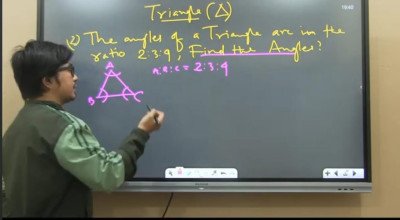Course description
Arithmetic Progression (AP) is a sequence of numbers in order, in which the difference between any two consecutive numbers is a constant value. It is also called Arithmetic Sequence. For example, the series of natural numbers: 1, 2, 3, 4, 5, 6,… is an Arithmetic Progression, which has a common difference between two successive terms (say 1 and 2) equal to 1 (2 -1). Even in the case of odd numbers and even numbers, we can see the common difference between two successive terms will be equal to 2.
If we observe in our regular lives, we come across Arithmetic progression quite often. For example, Roll numbers of students in a class, days in a week or months in a year. This pattern of series and sequences has been generalized in Maths as progressions.
What is Arithmetic Progression?
In mathematics, there are three different types of progressions. They are:
- Arithmetic Progression (AP)
- Geometric Progression (GP)
- Harmonic Progression (HP)
A progression is a special type of sequence for which it is possible to obtain a formula for the nth term. The Arithmetic Progression is the most commonly used sequence in maths with easy to understand formulas.
Definition 1: A mathematical sequence in which the difference between two consecutive terms is always a constant and it is abbreviated as AP.
Definition 2: An arithmetic sequence or progression is defined as a sequence of numbers in which for every pair of consecutive terms, the second number is obtained by adding a fixed number to the first one.
The fixed number that must be added to any term of an AP to get the next term is known as the common difference of the AP. Now, let us consider the sequence, 1, 4, 7, 10, 13, 16,…
It is considered as an arithmetic sequence (progression) with a common difference 3.
গাণিতিক অগ্রগতি (AP) হল ক্রমানুসারে সংখ্যার একটি ক্রম, যেখানে যেকোনো দুটি পরপর সংখ্যার মধ্যে পার্থক্য হল একটি ধ্রুবক মান। একে অ্যারিথমেটিক সিকোয়েন্সও বলা হয়। উদাহরণস্বরূপ, প্রাকৃতিক সংখ্যার সিরিজ: 1, 2, 3, 4, 5, 6,… একটি পাটিগণিতের অগ্রগতি, যার দুটি ধারাবাহিক পদের মধ্যে একটি সাধারণ পার্থক্য রয়েছে (বলুন 1 এবং 2) 1 (2 -1) এর সমান . এমনকি বিজোড় সংখ্যা এবং জোড় সংখ্যার ক্ষেত্রেও, আমরা দেখতে পাচ্ছি পরপর দুটি পদের মধ্যে সাধারণ পার্থক্য 2 এর সমান হবে।
যদি আমরা আমাদের নিয়মিত জীবনে লক্ষ্য করি, আমরা প্রায়শই
পাটিগণিতের অগ্রগতি দেখতে পাই। উদাহরণস্বরূপ, একটি ক্লাসে শিক্ষার্থীদের রোল নম্বর, সপ্তাহে দিন বা বছরে মাস। সিরিজ এবং সিকোয়েন্সের এই প্যাটার্নটিকে গণিতে অগ্রগতি হিসাবে সাধারণীকরণ করা হয়েছে
পাটিগণিতের অগ্রগতি কি?
গণিতে, তিনটি ভিন্ন ধরণের অগ্রগতি রয়েছে। তারা হল:
পাটিগণিত অগ্রগতি (এপি)
জ্যামিতিক অগ্রগতি (GP)
হারমোনিক প্রগ্রেশন (HP)
একটি অগ্রগতি হল একটি বিশেষ ধরনের ক্রম যার জন্য nম পদের জন্য একটি সূত্র পাওয়া সম্ভব। গাণিতিক অগ্রগতি হল সহজে বোঝার সূত্র সহ গণিতে সবচেয়ে বেশি ব্যবহৃত ক্রম।
সংজ্ঞা 1: একটি গাণিতিক ক্রম যেখানে পরপর দুটি পদের মধ্যে পার্থক্য সর্বদা একটি ধ্রুবক এবং এটিকে সংক্ষেপে AP বলা হয়।
সংজ্ঞা 2: একটি গাণিতিক ক্রম বা অগ্রগতি সংখ্যার একটি ক্রম হিসাবে সংজ্ঞায়িত করা হয় যেখানে প্রতি জোড়া পরপর পদের জন্য, প্রথমটির সাথে একটি নির্দিষ্ট সংখ্যা যোগ করে দ্বিতীয় সংখ্যাটি পাওয়া যায়।
পরবর্তী টার্ম পেতে একটি AP-এর যেকোনো পদে যে নির্দিষ্ট সংখ্যা যোগ করতে হবে তাকে AP-এর সাধারণ পার্থক্য বলে। এখন, 1, 4, 7, 10, 13, 16, ক্রমটি বিবেচনা করা যাক।
এটি একটি সাধারণ পার্থক্য 3 সহ একটি গাণিতিক ক্রম (প্রগতি) হিসাবে বিবেচিত হয়।




















